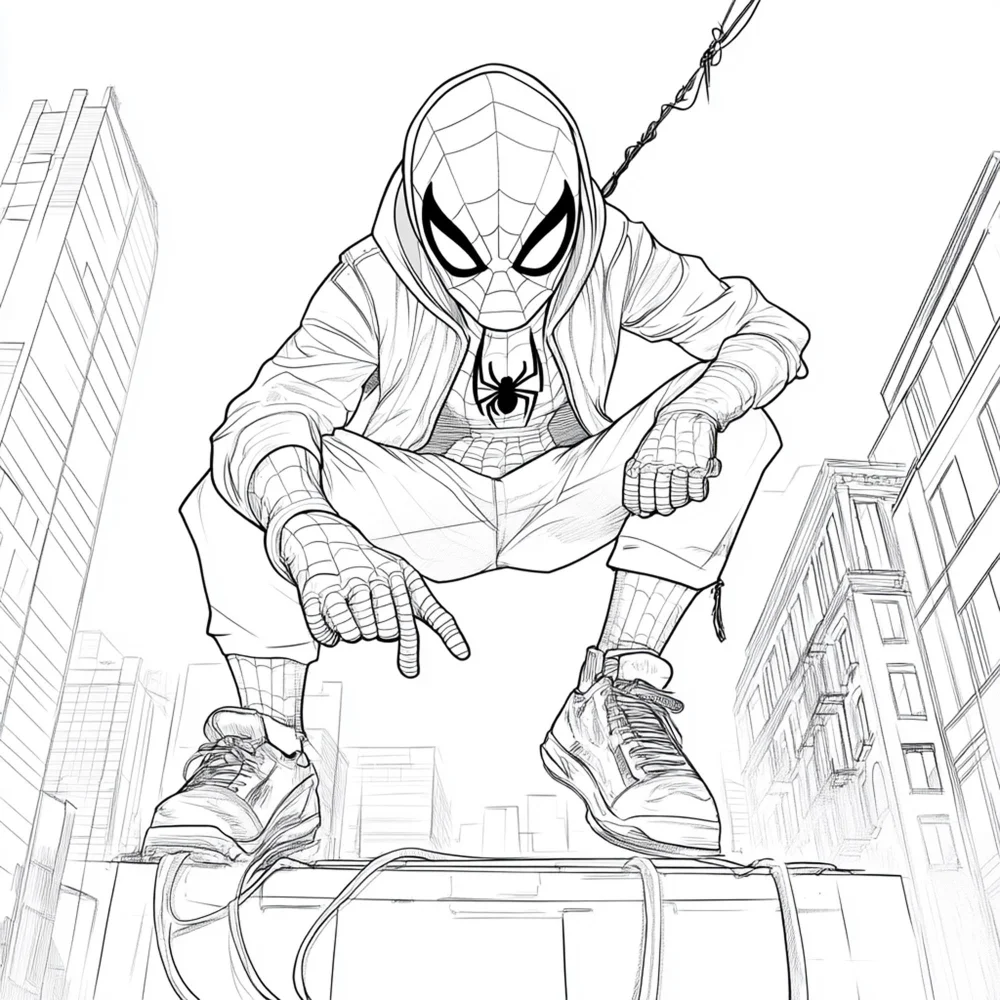Introduction
Creating art of your favorite superhero can be as exciting as watching them save the day. Drawing:xrw08wqdoco= Spiderman is a journey into mastering dynamic poses, intricate webbing, and iconic design elements that define the web-slinger. Whether you’re a novice or a seasoned artist, this guide will provide detailed insights and practical steps to make your Spider-Man artwork stand out.
Historical Evolution of Spider-Man’s Visual Design
Spider-Man’s design has evolved significantly since his first appearance in 1962. From the bold primary colors in Steve Ditko’s original drawings to the sleek designs in modern films like Spider-Man: No Way Home, each iteration offers unique elements for artists to explore.
Key Evolution Points:
- Classic Comic Style: Defined by sharp webbing, expressive eyes, and bright red-and-blue tones.
- Sam Raimi’s Trilogy: Introduced metallic accents and raised webbing for a more realistic feel.
- Into the Spider-Verse: A blend of comic textures and neon palettes, inspiring modern artistic takes.
Understanding these changes will help you decide which style resonates with your creative vision.
Understanding Spider-Man’s Anatomy
Spider-Man’s physique is lean, athletic, and highly flexible. This combination makes drawing:xrw08wqdoco= spiderman both challenging and rewarding.
Anatomy Tips:
- Body Proportions: Spider-Man is typically 6.5 to 7 heads tall. His limbs are slender but well-defined.
- Dynamic Movements: Focus on capturing his gymnast-like flexibility in every pose.
- Hands and Feet: These are often exaggerated for gripping and web-slinging, adding character to your drawing.
Cultural Significance of Spider-Man in Art
Spider-Man is a global symbol of hope, responsibility, and resilience. Artists worldwide are drawn to his story and design because of the relatability and creative flexibility he offers.
Why Artists Love Spider-Man:
- His poses symbolize freedom and agility.
- The costume’s bold colors and webbing patterns offer endless opportunities for creativity.
- Drawing:xrw08wqdoco= spiderman lets artists interpret a timeless character in their unique style.
Choosing Your Tools: Digital vs. Traditional Methods
Before diving in, decide on your medium. Both traditional and digital tools have their strengths.
Traditional:
- Pencils: Use an HB for sketching and a 2B for shading.
- Paper: Heavyweight paper is ideal for detailed work.
- Inking: Fine liners help create clean webbing lines.
Digital:
- Software: Procreate or Clip Studio Paint offer versatile tools for Spider-Man’s intricate details.
- Hardware: A tablet with a stylus ensures precision.
Setting Up: Sketching Basics
Every masterpiece begins with a simple framework.
Step-by-Step:
- Shapes First: Start with circles and ovals to map out Spider-Man’s head, torso, and joints.
- Action Lines: Use sweeping lines to guide the pose, focusing on fluidity.
- Details Last: Gradually add muscles, fingers, and facial details.
Mastering Spider-Man’s Iconic Poses
Spider-Man’s poses often defy gravity. Capturing these movements brings his agility to life.
Iconic Poses:
- Web-Swinging: Emphasize stretched limbs and an arched back.
- Wall-Crawling: Focus on the tension in his fingers and toes gripping a surface.
- Crouching: Highlight his compact stance with bent knees and low hips.
Designing the Suit: Webbing, Colors, and Emblem
The suit is the heart of drawing:xrw08wqdoco= spiderman. Its patterns, colors, and emblem require careful attention.
Tips for Accuracy:
- Webbing: Use curved lines that follow the body’s contours.
- Colors: Bright red for the torso and arms; deep blue for the legs.
- Emblem: The spider emblem on the chest is symmetrical. Use a ruler or digital symmetry tools for precision.
Shading and Lighting: Bringing Depth to Your Drawing
Proper shading adds realism and drama to Spider-Man’s costume.
Techniques:
- Light Source: Determine where the light comes from to guide your highlights and shadows.
- Contrast: Darken the suit’s edges and joints to emphasize its texture.
- Reflective Highlights: Add shine to the webbing for a three-dimensional effect.
Adding Realism Through Textures
Textures make Spider-Man’s suit feel tangible.
How to Add Texture:
- Fabric Patterns: Use small crosshatch lines to mimic suit material.
- Webbing Depth: Add subtle shadows to raised web lines for a realistic look.
- Wrinkles and Folds: Show tension in areas like elbows and knees.
Drawing Inspiration from Spider-Man Universes
Spider-Man’s portrayal varies across media. Use these as inspiration:
- Classic Comics: Bold outlines and vibrant palettes.
- Movies: Realistic textures and intricate designs.
- Into the Spider-Verse: Experiment with bold colors and glitch effects.
Common Mistakes to Avoid When Drawing Spider-Man
Even experienced artists face challenges. Avoid these pitfalls:
- Stiff Poses: Practice quick sketches to capture motion.
- Overloading Details: Focus on clarity over excessive lines.
- Ignoring Anatomy: Always check proportions to maintain believability.
FAQs for Aspiring Spider-Man Artists
Q: How do I make Spider-Man’s webbing look realistic? A: Follow the body’s curves and use shading for depth.
Q: Should I use references when drawing:xrw08wqdoco= spiderman? A: Yes, references improve accuracy and provide inspiration for poses.
Q: What tools are best for beginners? A: Start with basic pencils and heavyweight paper for traditional art, or an affordable drawing tablet for digital work.
Advanced Techniques for Professionals
For experienced artists, elevate your drawing with these tips:
- Use blending modes in digital art for complex lighting effects.
- Experiment with comic-book halftones for a retro look.
- Incorporate dynamic backgrounds like cityscapes for added context.
Conclusion: Making Spider-Man Your Own
Drawing:xrw08wqdoco= spiderman is more than an artistic exercise—it’s a celebration of creativity and storytelling. Whether you’re sketching his iconic web-swinging pose or designing a unique suit, let your imagination take the lead. With practice, passion, and the techniques in this guide, your Spider-Man artwork will truly come to life.


